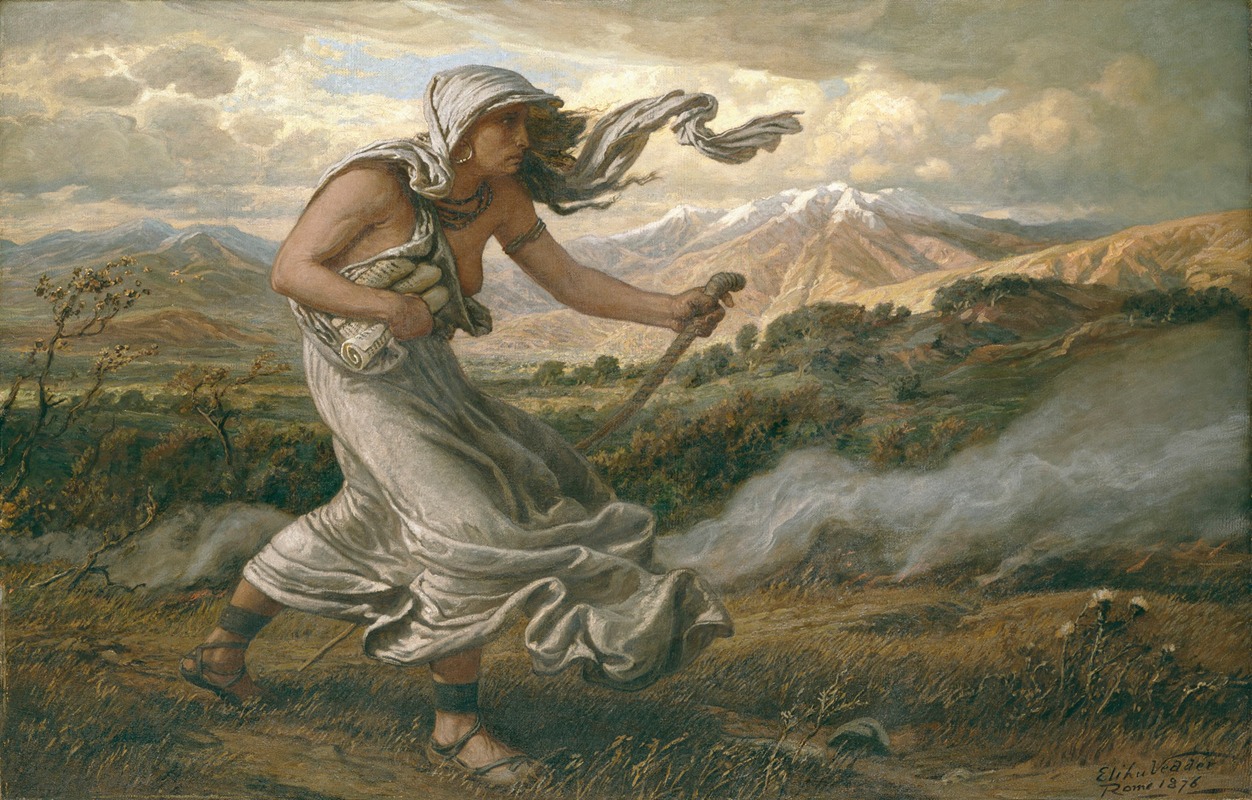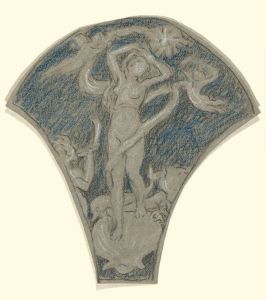
The Cumaean Sibyl
A hand-painted replica of Elihu Vedder’s masterpiece The Cumaean Sibyl, meticulously crafted by professional artists to capture the true essence of the original. Each piece is created with museum-quality canvas and rare mineral pigments, carefully painted by experienced artists with delicate brushstrokes and rich, layered colors to perfectly recreate the texture of the original artwork. Unlike machine-printed reproductions, this hand-painted version brings the painting to life, infused with the artist’s emotions and skill in every stroke. Whether for personal collection or home decoration, it instantly elevates the artistic atmosphere of any space.
Elihu Vedder's "The Cumaean Sibyl" is a notable painting by the American symbolist artist, created in 1876. Vedder, who was known for his mystical and allegorical works, drew inspiration from classical mythology and literature, and this painting is a testament to his fascination with these themes.
The Cumaean Sibyl is a figure from ancient Roman mythology, known as one of the ten Sibyls, or prophetesses, who were believed to possess the ability to foretell the future. The Cumaean Sibyl, in particular, was associated with the town of Cumae, near Naples, Italy. She is famously featured in Virgil's "Aeneid," where she guides the hero Aeneas through the underworld. Her prophecies were highly regarded in ancient times, and she was said to have lived for a thousand years, although she aged without retaining her youthful appearance.
Vedder's depiction of the Cumaean Sibyl captures the mystical and enigmatic nature of this legendary figure. The painting is characterized by its use of muted colors and a dreamlike quality, which are hallmarks of Vedder's style. The Sibyl is portrayed as an aged woman, embodying the wisdom and mystery associated with her character. Her expression is contemplative, suggesting a deep connection to the divine knowledge she is believed to possess.
The composition of the painting is carefully balanced, with the Sibyl positioned centrally, drawing the viewer's attention to her presence. Vedder's use of light and shadow adds depth to the painting, enhancing the ethereal atmosphere. The background is intentionally kept vague, allowing the focus to remain on the Sibyl herself. This technique is typical of Vedder's work, where the emphasis is often on the symbolic and the mystical rather than the literal.
Elihu Vedder was part of the American expatriate community in Italy during the late 19th century, and his experiences in Europe greatly influenced his artistic style. His interest in symbolism and the esoteric is evident in "The Cumaean Sibyl," as he sought to explore themes beyond the material world. Vedder's work was well-received in his time, and he was considered a leading figure in the American symbolist movement.
"The Cumaean Sibyl" is housed in the collection of the Smithsonian American Art Museum in Washington, D.C. The painting is part of a larger body of work by Vedder that explores mythological and allegorical subjects, reflecting his deep engagement with the spiritual and the mysterious. Through this painting, Vedder invites viewers to ponder the nature of prophecy and the timeless quest for knowledge and understanding.
Overall, Elihu Vedder's "The Cumaean Sibyl" remains an important work in the canon of American art, exemplifying the artist's skill in merging classical themes with a symbolist approach. The painting continues to captivate audiences with its haunting beauty and profound symbolism, offering a glimpse into the mystical world of the ancient Sibyls.












